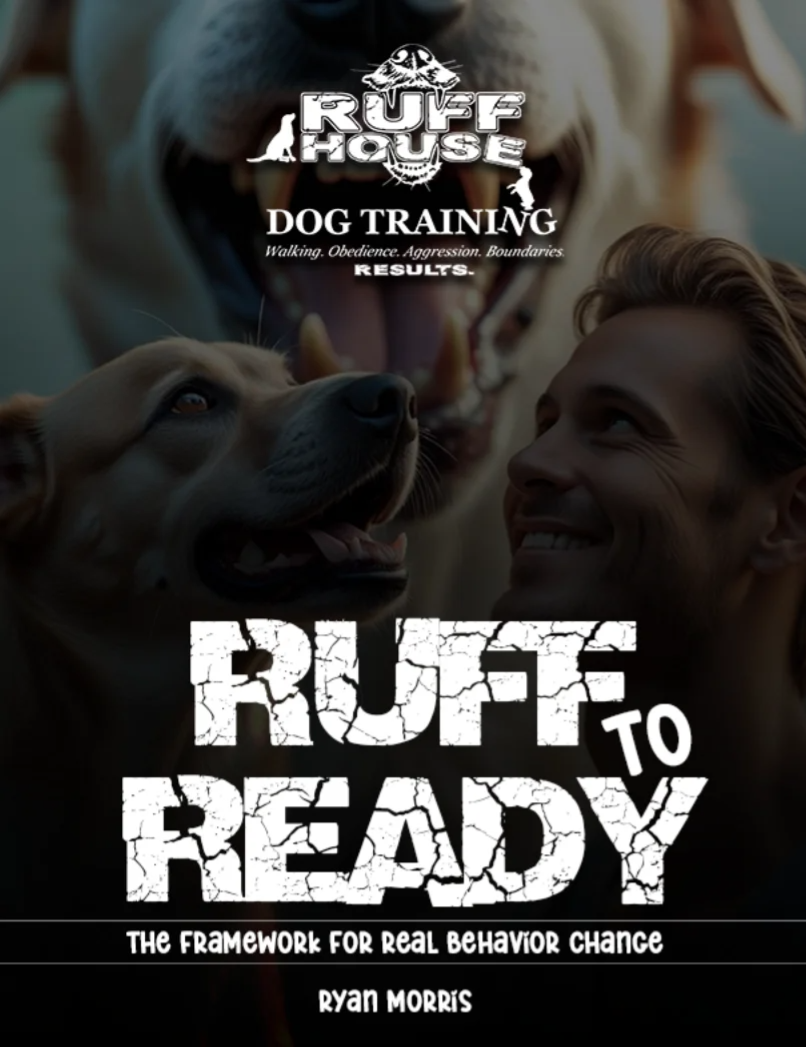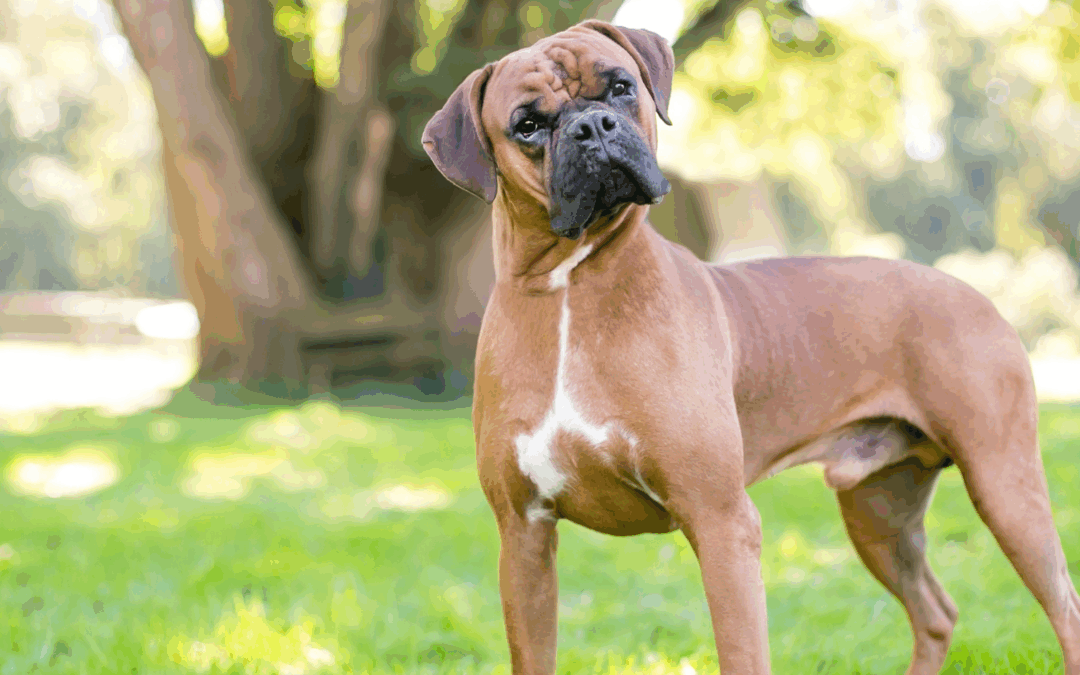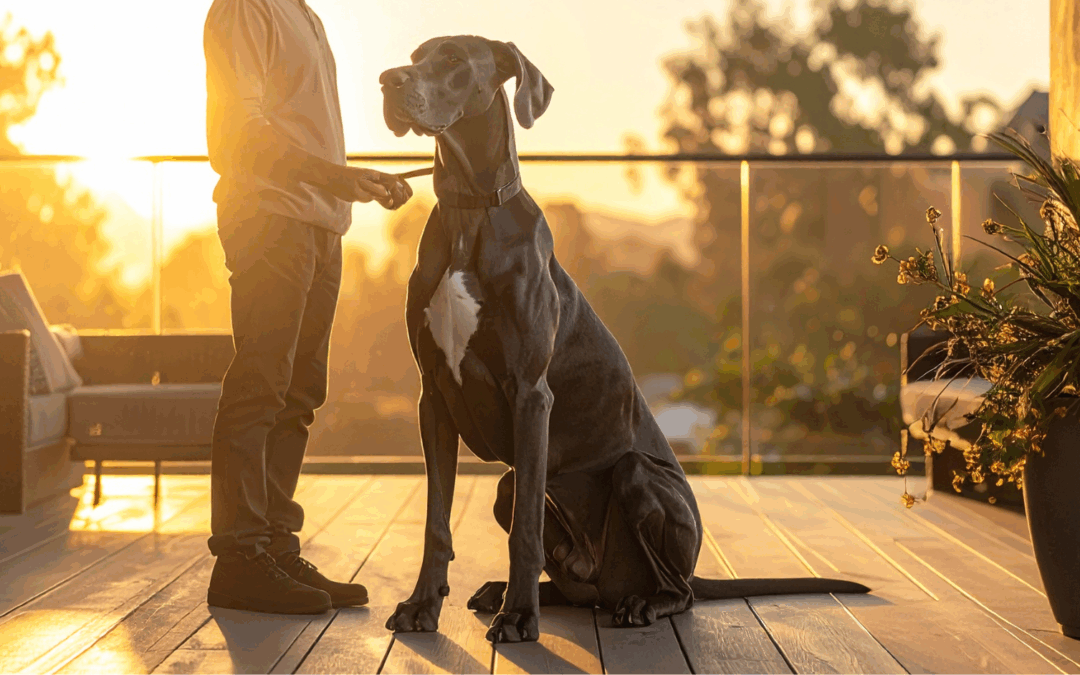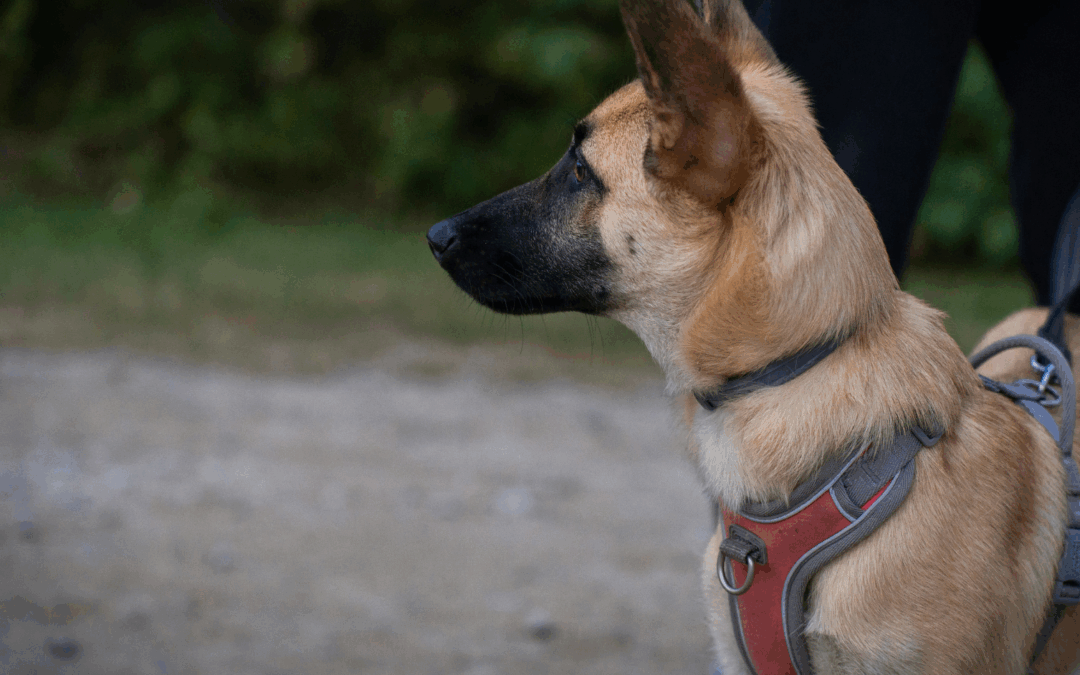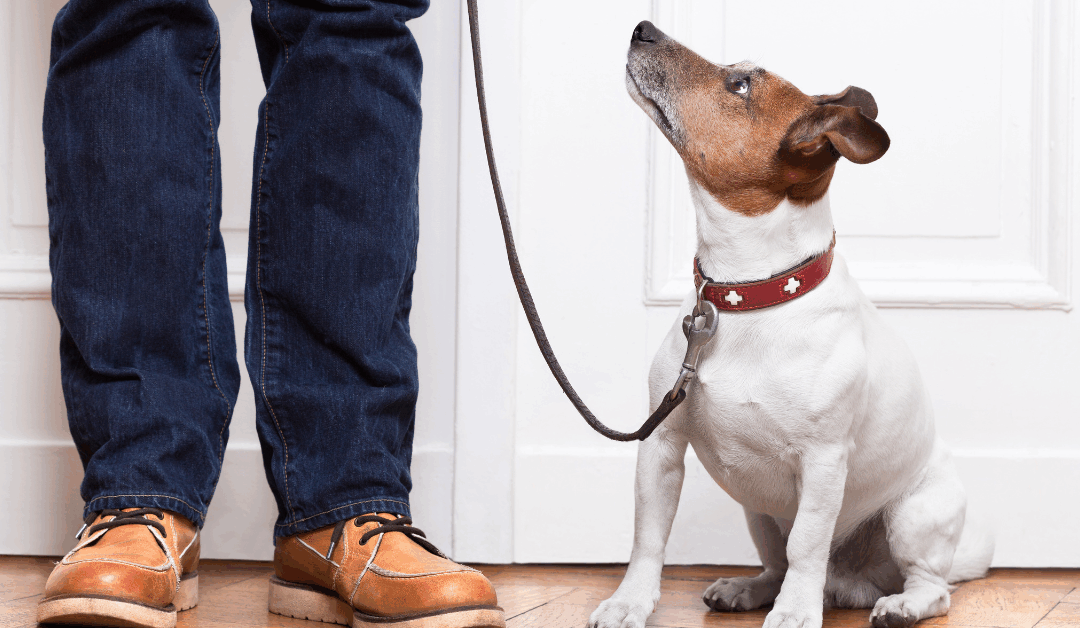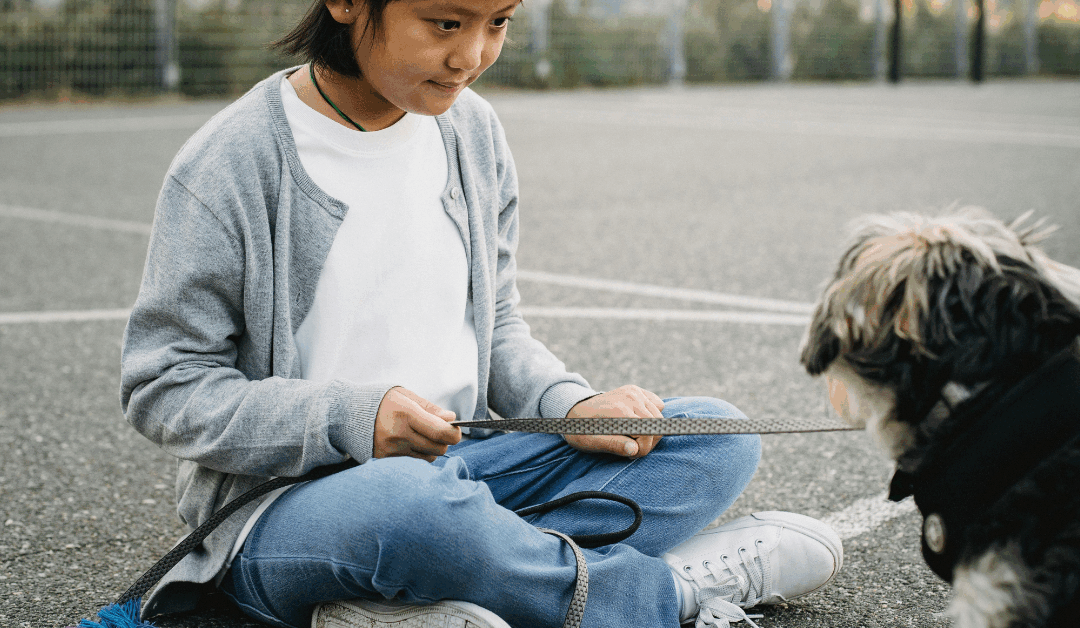Does your dog turn into a four-legged tornado of destruction the moment you leave? You’re not alone. Separation anxiety affects millions of dogs, transforming happy, well-behaved pets into anxious creatures who bark excessively, chew furniture, or have accidents indoors when left alone.
Understanding your dog’s separation anxiety is the first step toward helping them feel secure and confident during your absences. This comprehensive guide will walk you through recognizing the signs of separation anxiety, understanding why it develops, and implementing proven training techniques that can transform your stressed pup into a calm, content companion.
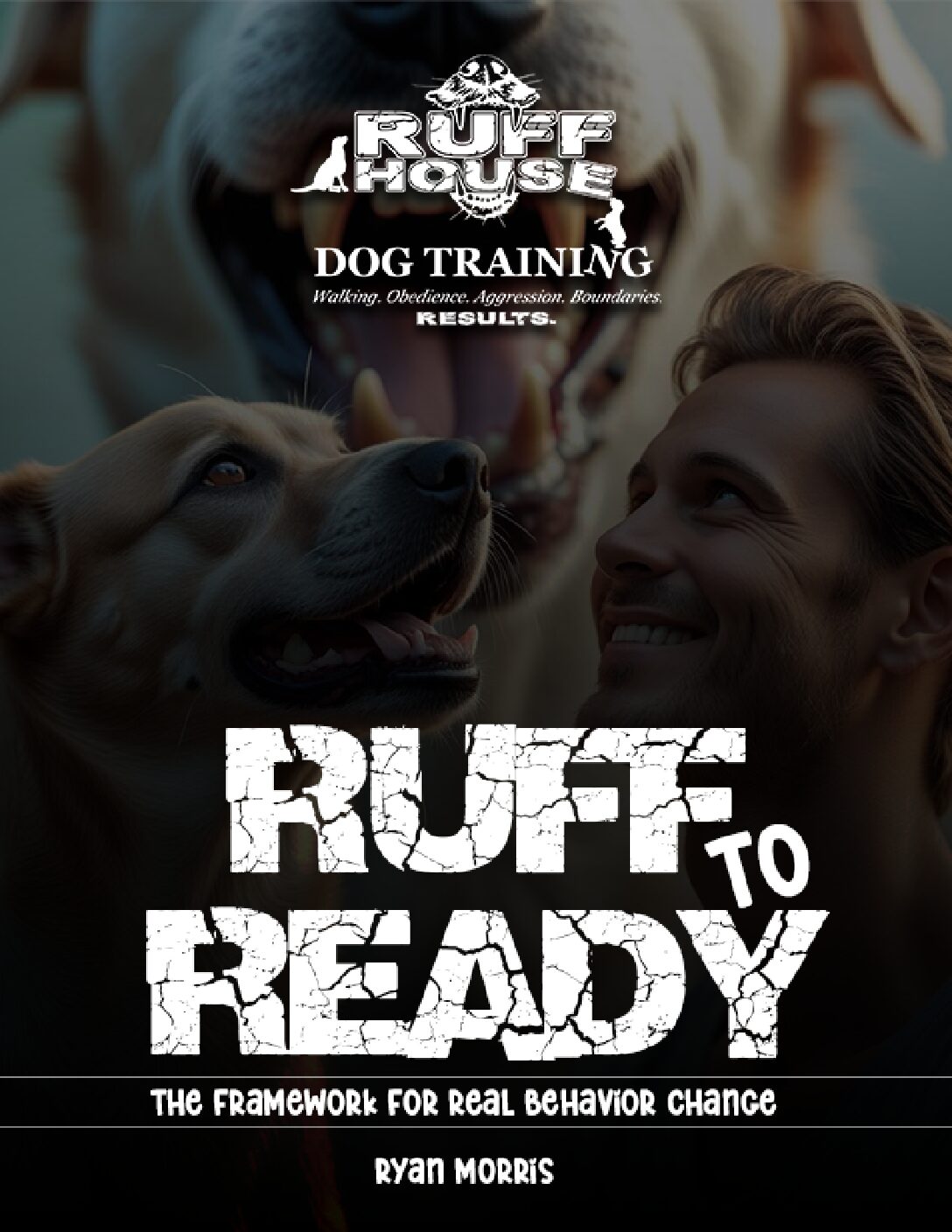
Unlock Real Behavior Change – Download Your Free Guide Now
"*" indicates required fields
Whether you’re dealing with mild anxiety or severe separation-related behaviors, these dog separation anxiety training strategies outlined hwill help you and your furry family member find peace of mind.
Understanding Separation Anxiety In Dogs
Separation anxiety in dogs is a complex behavior issue that goes far beyond simple loneliness. Dogs with separation anxiety experience genuine panic when separated from their pet parents, triggering a fight-or-flight response that can lead to destructive and separation related problem behaviors.
This condition affects dogs of all ages, breeds, and backgrounds. While some dogs naturally adapt to being alone, others struggle with even brief separations. The intensity can range from mild restlessness to severe panic attacks that leave both dog and owner exhausted and frustrated.
Most dogs can handle short periods alone without issue, but dogs suffering from separation anxiety cannot cope with solitude, regardless of the duration. Even a quick trip to the mailbox can trigger anxious behaviors in severely affected dogs.
Common Signs of Dog Separation Anxiety
Recognizing separation anxiety requires observing your dog’s behavior both before you leave and after you return. Many pet parents mistake normal puppy energy or occasional misbehavior for anxiety, but true separation anxiety presents distinct patterns.
Physical Signs and Behaviors
Dogs with separation anxiety often display excessive barking or howling that begins shortly after the owner’s departure. This vocalization differs from occasional barking—it’s persistent, intense, and often continues for hours. Neighbors frequently report this constant noise as their first indication of a problem.
Destructive chewing represents another hallmark sign, but it’s typically focused on items that smell like the owner or around exit points like doors and windows. Dogs might chew shoes, clothing, or furniture near entryways as they attempt to escape or seek comfort through familiar scents.
House soiling in otherwise housetrained dogs signals anxiety rather than a lapse in training. These accidents often occur near doors or in areas where the dog spends time waiting for the owner’s return.
Pre-Departure Anxiety Signals
Many dogs with separation anxiety begin showing stress signals before their owners even leave. These anticipatory behaviors include following the owner from room to room, lip licking, panting when no physical exertion has occurred, or hiding when pre-departure cues appear.
Some dogs learn to recognize departure routines—grabbing keys, putting on shoes, or picking up a purse—and begin displaying anxious behaviors immediately. This anticipatory anxiety can be just as distressing as the separation itself.
Return Behavior Patterns
When the owner returns, dogs with separation anxiety typically display over-the-top greetings that seem disproportionate to the length of absence. While most dogs show happiness upon their owner’s return, anxious dogs often appear frantic, unable to settle down for extended periods.

Photo by Michelle Tresemer on Unsplash
Why Dogs Develop Separation Anxiety
Understanding the root causes of separation anxiety helps in developing effective treatment strategies. Multiple factors can contribute to this complex behavior, and often several elements combine to create the perfect storm for anxiety development.
Life Changes and Triggers
Major life transitions frequently trigger separation anxiety in previously calm dogs. Moving to a new home disrupts familiar routines and environments, potentially creating insecurity about when or if the owner will return.
Changes in family structure, such as divorce, death of a family member, or children leaving for college, can destabilize a dog’s world. Dogs form strong attachments to all family members, and sudden absences can create confusion and anxiety.
Schedule changes also impact sensitive dogs. A sudden shift from someone being home all day to full-time work schedules can overwhelm a dog who hasn’t gradually adjusted to longer periods alone.
It Could Be Your Fault
We must take into consideration the habits and routines we get the dogs accustomed to. We don’t like to admit when things are our fault, but complain when we reap what we sow. We typically give an abundance of affection to our dogs. Why wouldn’t we? We love our dogs! That could begin to create a monster.
Don’t get wrapped up in the “breed racism” where you think, “I have [insert breed] and I hear that there require [fill in the blank]. Granted, each dog has its own likes and dislikes. Some dogs love affection, some dogs are fine without it. Where we fail to acknowledge our own actions is giving the dog affection all the time. Ultimately, training the dog to rely on you for comfort.
It’s important to help the dog understand independence. This is a huge factor in creating separation anxiety and even possessiveness over the affection giver. Ensure that you assess your own actions while attempting to “diagnose” the results of your actions.

Getting Professional Help From Ruff House Dog Training
While many cases of mild separation anxiety respond well to consistent home training, severe cases often require professional intervention. Knowing when to seek help can save months of frustration and prevent the condition from worsening.
When to Contact Us
Consider help from Ruff House Dog Training if your dog’s destructive behavior poses safety risks, such as breaking through doors or windows in escape attempts. Similarly, if neighbors complain about constant barking or if your dog injures themselves during panic episodes, professional intervention becomes crucial.
A certified professional dog trainer specializing in behavior modification can assess your specific situation and develop a customized separation anxiety protocol. These professionals understand the nuances of treating separation anxiety and can identify underlying issues that pet parents might miss.
A certified separation anxiety trainer offers specialized expertise in this specific condition. These trainers understand the systematic desensitization process and can guide you through the training process at your dog’s pace.
Creating Your Separation Anxiety Training Plan
Effective separation anxiety training requires a structured approach tailored to your dog’s specific needs and current anxiety level. The process typically involves three main phases: initial assessment, systematic desensitization, and gradual independence building.
Crate Training
Crate training can help some dogs feel secure. Ruff House Dog Training can help you formulate a customized training plan that aims to address separation anxiety, crate training, obedience and much more. Contact us today!
Effective Dog Separation Anxiety Training Techniques
Successful separation anxiety training requires patience, consistency, and a systematic approach. The most effective methods focus on gradually teaching dogs that being alone is safe and temporary, while building their confidence and independence.
Systematic Desensitization
Systematic desensitization forms the cornerstone of separation anxiety treatment. This process involves gradually exposing your dog to very brief absences and slowly increasing the duration as they become comfortable with each level.
Start with departures so short they don’t trigger anxiety—sometimes just stepping outside for 10-15 seconds. The key is finding a duration where your dog remains calm and building from there. If your dog shows any anxiety signs, you’ve moved too quickly and need to step back to a comfortable level.
This process requires significant time investment, sometimes taking weeks or months to progress to longer absences. However, rushing the process often results in setbacks that take even longer to overcome.
Independence Training
Many dogs with separation anxiety are overly dependent on their owners, following them everywhere and demanding constant attention. Independence training helps dogs develop confidence and self-reliance.
Practice having your dog stay in another room while you’re home, gradually increasing the duration. Teach them to settle on their own bed or mat and reward calm, independent behavior throughout the day.
Avoid reinforcing clingy or undesirable behavior by constantly petting or responding to attention-seeking. Instead, reward your dog when they choose to relax independently, building their confidence in being alone.
Creating a Calming Environment
Environmental modifications can significantly support your separation anxiety training efforts. A well-designed space helps dogs feel secure and provides appropriate outlets for natural behaviors during alone time.
Physical Space Considerations
Designate a specific area where your dog will spend alone time, choosing a space that feels secure rather than isolated. Many dogs prefer areas where they can see outside but aren’t overstimulated by constant activity.
Ensure the space contains comfortable bedding, fresh water, and appropriate toys. Remove items that might trigger destructive behavior, such as shoes, household objects, or valuable items your dog might chew when anxious.
Consider using baby gates instead of closing doors, as some dogs feel less trapped when they can see other areas of the house. However, other dogs feel more secure in a cozy, enclosed space—observe your individual dog’s preferences.
Mental and Physical Stimulation
Providing adequate mental stimulation before departures can help tired dogs settle more easily. Puzzle toys, food-dispensing toys, or frozen treats give dogs something positive to focus on during early separation periods.
Physical exercise before departures helps reduce excess energy that might otherwise fuel anxious behaviors. However, avoid over-exercising immediately before leaving, as some dogs become more alert and reactive when overstimulated.
Rotate toys regularly to maintain novelty and interest. Dogs are more likely to engage with “new” toys than items they see constantly.
Addressing Specific Problem Behaviors For Behavior Modification
Different manifestations of separation anxiety require targeted approaches alongside general training techniques. Understanding how to address specific symptoms helps create more effective treatment plans.
Managing Excessive Barking
Excessive barking during separation can strain neighbor relationships and indicate high stress levels. Address this behavior by first ensuring your dog receives adequate physical and mental stimulation before departures.
Practice teaching a “quiet” command during non-stressful times, rewarding your dog for stopping barking on cue. This foundation helps during actual training sessions when you can interrupt barking before it escalates.
Consider environmental modifications such as closing curtains to reduce visual triggers or using white noise to mask sounds that might prompt barking.
Preventing Destructive Chewing
Destructive chewing often focuses on items with the owner’s scent or areas near exits. Management involves both removing tempting items and providing appropriate chewing alternatives.
Provide durable, safe chew toys that can withstand intense chewing sessions. Rotate these toys to maintain interest and reserve special chewing items for alone time.
Some dogs benefit from puzzle feeders that slow eating and provide extended mental engagement, redirecting the urge to chew toward appropriate activities.
House Training Issues
Dogs with separation anxiety sometimes have accidents despite being otherwise house trained. These incidents typically result from anxiety rather than training lapses and require a compassionate approach.
Ensure your dog has had adequate opportunities to eliminate before departures. Consider adjusting feeding schedules if accidents consistently occur at specific times.
Clean accidents thoroughly with enzymatic cleaners to remove odors that might prompt repeat incidents in the same location. Never punish accidents, as this can increase anxiety levels.
Long-Term Management and Prevention of Separation Related Behaviour
Successfully managing separation anxiety requires ongoing commitment and adjustment as circumstances change. Understanding how to maintain progress and prevent relapse ensures long-term success for both dog and owner.
Maintaining Training Consistency
Consistency remains crucial even after initial progress. All family members need to follow the same protocols to avoid confusing the dog or inadvertently reinforcing anxious behaviors.
Continue practicing short departures and independence exercises even when longer absences become manageable. This maintenance training prevents regression and builds continued confidence.
Document your dog’s progress to identify patterns and adjust training as needed. Some dogs show steady improvement while others experience plateaus or temporary setbacks that require modified approaches.
Preparing for Life Changes
Life inevitably brings changes that might challenge a previously anxious dog. Prepare for schedule modifications, moves, or family changes by gradually introducing smaller versions of these transitions.
If you know major changes are coming, begin preparation training well in advance. Dogs need time to adjust to new routines and expectations without the pressure of sudden, major transitions.
Consider hiring a dog sitter or enrolling in doggy daycare during particularly stressful periods or when your absence schedule changes significantly.
Building Your Support Network To Handle Separation-Related Problems
Separation anxiety training works best when you have professional guidance and realistic expectations. Building connections with qualified trainers and understanding the training process helps ensure success.
Finding Qualified Professionals
Look for a Board Certified Behaviorist who specializes specifically in this condition. These professionals understand the unique challenges of treating separation anxiety and can provide ongoing support throughout the training process.
Verify credentials and ask about specific experience with separation anxiety cases. The most effective trainers offer initial assessment consultations and develop customized training plans based on your dog’s individual needs and pace.
Many qualified trainers also provide lifetime access to support, recognizing that separation anxiety treatment often requires ongoing adjustment and troubleshooting.
Setting Realistic Expectations
Separation anxiety training is not a quick fix—effective treatment typically takes weeks or months of consistent work. Understanding this timeline helps maintain motivation during challenging periods.
Progress rarely follows a straight line. Expect good days and difficult days, with gradual overall improvement over time. Setbacks don’t indicate failure but rather normal parts of the healing process.
Celebrate small victories along the way. Even minor improvements represent significant progress for an anxious dog and should be acknowledged and rewarded.

Helpful Resources for Dog Separation Anxiety
Here are a few valuable resources to help you better understand and address dog separation anxiety:
ASPCA – Separation Anxiety in Dogs
The ASPCA provides an in-depth guide on symptoms, causes, and effective ways to manage separation anxiety in dogs.
American Kennel Club – How to Help a Dog With Separation Anxiety
This article offers expert tips and strategies for recognizing and treating separation anxiety in dogs of all breeds.
Preventive Vet – Separation Anxiety Training Tips
Preventive Vet shares practical techniques for easing your dog’s anxiety and establishing a peaceful routine.
Dog Behaviorist Articles by Victoria Stilwell
Renowned dog trainer Victoria Stilwell’s site includes insightful articles on managing separation anxiety and other behavioral issues.
The Humane Society – Desensitization and Counterconditioning
Learn about effective methods like desensitization and counterconditioning to help your dog feel comfortable when you’re away.
Tufts University Cummings School of Veterinary Medicine – Canine Separation Anxiety
This academic resource dives deeper into the science and treatment of separation anxiety in dogs.
These resources provide a mix of practical advice, scientific knowledge, and expert insights to support you and your dog through this challenge.
Dog Owners Taking the Next Steps Toward Success
Helping your dog overcome separation anxiety requires dedication, patience, and often professional guidance, but the reward—a calm, confident dog who can handle your absences—makes the effort worthwhile. Remember that every dog progresses at their own pace, and what works for one may need adjustment for another.
Start with small changes you can implement immediately: create positive departure associations, practice very brief absences, and ensure your dog receives adequate mental and physical stimulation. These foundation steps begin building the confidence your dog needs for longer-term success.
For dogs with severe separation anxiety or when home training efforts aren’t producing results, don’t hesitate to seek professional help. A certified separation anxiety trainer can provide the specialized guidance needed to develop an effective treatment plan tailored to your dog’s specific needs.
Your commitment to helping your dog’s anxiety strengthens your bond and creates a more peaceful household for everyone. With the right approach, consistency, and support, most dogs can learn to feel secure and content during necessary separations, restoring harmony to your shared life.


